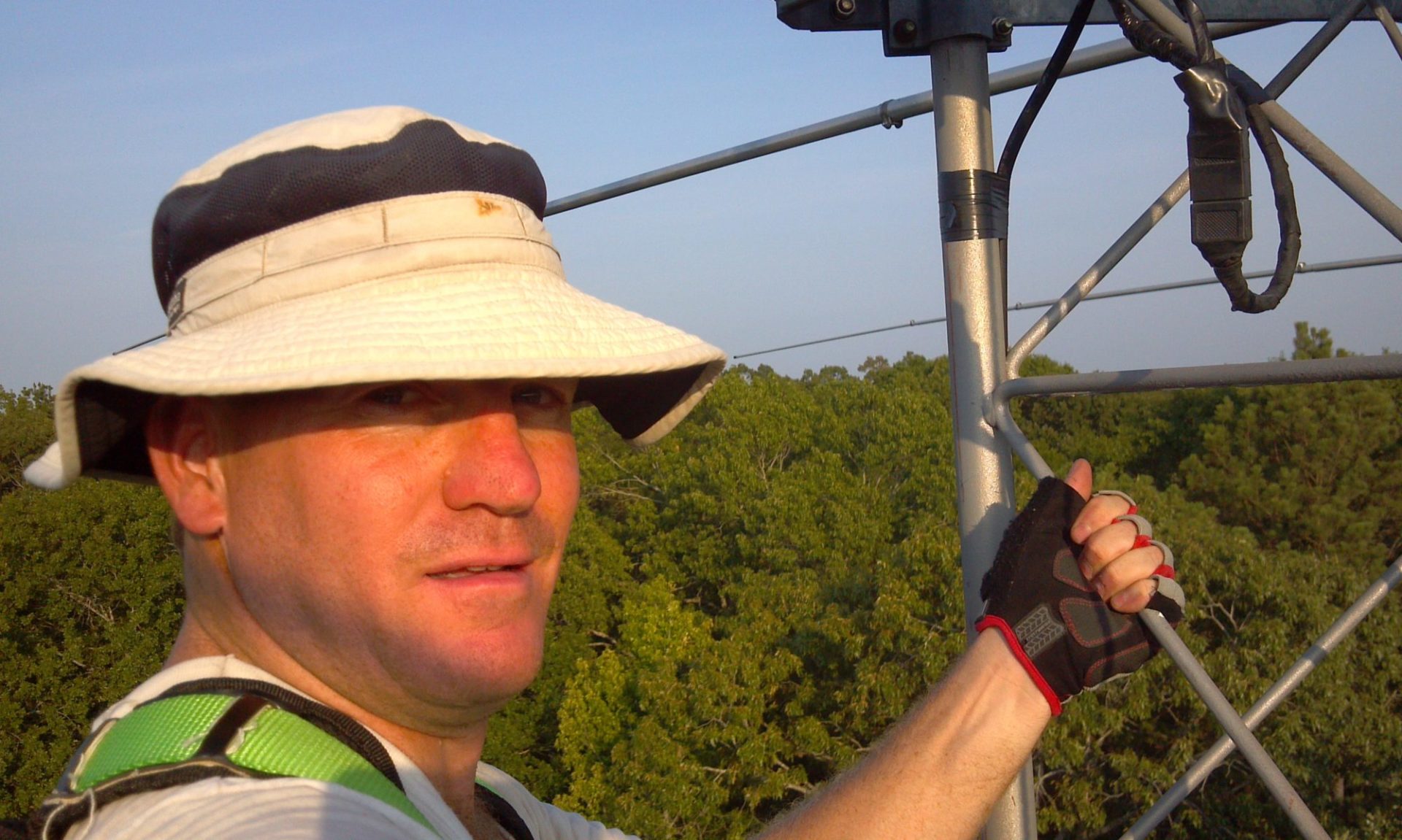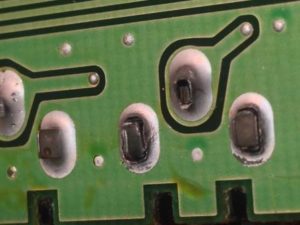Fellow hams and contesters:
I apologize for the length of this post; however, the story contained is relevant, because it addresses how I at the young age of 13 was attracted to ham radio and then into the world of radio sport.
I’ve been following this dialogue now for many days. Many interesting and wonderful points of view have been expressed. Many solutions have been proposed. Yet the underlying important question that has been expressed is “How to attract new or young people to become interested in obtaining a ham license and then learning to contest and participate in contests?”
Full disclosure:
I am currently 46 years old. I proudly admit to having been a nerd in the 1980’s, a geek in the 1990’s. And I’m still both! First ham license at age 26, as KD5CAS, Techician Plus with 5 wpm code Obtained Extra class license in July 1999, with 20 wpm code. Vanity 1×2 call, W5WZ, issued November 1999.
So here is my story and perhaps contained therein is an answer:
A Seed is Planted (as written at: https://www.w5wz.com/about/about-w5wz/
)
My interest in amateur radio, more commonly known as ham radio, began at the age of 13.
Our scoutmaster had arranged for a local ham to attend one of our campouts and do a ham radio demonstration.
I remember the man using a fishing rod to throw lines into trees to pull up a dipole antenna. The first demo was to use a repeater to autopatch and call the scoutmaster’s wife. We boys got a big kick out of that, because Ms. Gloria always answered the phone in a dramatic Southern-style “Hel-lo”. Next, he demonstrated SSB and CW, working many stations around the world from beside our campfire that night.
However, I suppose that I didn’t express enough interest at the time to be taken seriously (as if a 13 year-old knows what he wants). So 13 years passed before I met another ham. At age 26, I was helping my boss, Jim, split firewood with my hydraulic splitter. We finished the task ahead of schedule. Jim, W5LA, invited me inside. He asked if I knew anything about ham radio. I relayed my Boy Scout experience. After just a few minutes, he’d made QSOs with several European and Asian stations. I once again was hooked.
Jim elmered me along the path to get my license. Only 19 days passed from that re-introduction at his home to the testing session and subsequent license grant. On August 19, 1997, Amateur Radio Station KD5CAS was born as a Technician Plus. This is memorable to my wife and I, as our first child had been born six weeks earlier, and we both were still getting used to the added role of parent.
Not being satisfied with limited operating privileges, I pursued upgrades in prompt fashion. General – April 1998, Advanced – March 1999, and Extra – July 1999.
CONTESTING BUG BITES! (as written at: https://www.w5wz.com/contesting/w5wz-starts-contesting/ ) It was Field Day 1998. I had been a ham only 9 months, and had really never heard of contesting. Our club was to operate from the football stadium at West Monroe High School. I was appointed to be a member of the Field Day committee and assigned to rent a pop-up camper with air conditioning for the CW station to be housed in. We also had the sherriff’s department Em-Comm bus, and a local TV station’s remote switching trailer.
I had brought my home station to be used on 40 and 15m SSB. Very modest, it was a stock (no filters) Kenwood TS-430, an MFJ969 antenna tuner, and a 135-ft dipole fed with ladder line. It was set up in the TV station trailer. At that time, our club always had one person to operate the radio, and another to log using NA by K8CC on the computer. No one used rig control, and the computers were not networked, nor did anyone use SCP.
I was sitting behind 2 guys as they operated early on Saturday afternoon. Ken N5WKI was logging and Ray W5EW was running the radio on 15m SSB. Ken needed to take a nature break, so Ray didn’t ask, he told me to sit down and log for him. A total rookie, I sat down and began logging for Ray. However, I could touch-type over 60 wpm, so there was an advantage for me. Ray is a pretty good contester, and he was running at over 60 QSOs per hour. Eventually, Ray needed a break, and told me to slide over and operate the radio and log until he got back.
Some 30 minutes later, he returned to find me still holding the frequency and running at 90 QSOs per hour. At that point, he said I didn’t need any help and left me to my own devices.
Three weeks later, I enter the 1998 IARU and won the LA section. The doctor has confirmed there is no cure.
What Have I Done to Further Ham Radio?
I’ve planted seeds! Since obtaining my license, my entire family has also obtained their technician ham licenses. Granted, I cannot force them to like or even enjoy ham radio. But they have been exposed to very cool stuff!
My wife Sharon is KW5MOM. My son Delton is KF5GDK, licensed at age 10. My daughter Jordan is KF5GDJ, licensed at age 9. The day she got her license, she contacted 11 unique DX countries. My daughter Laurel is KF5KAJ, licensed at age 10. My daughter Logan is KF5MTH, licensed at age 8. Before she was licensed, we multi op’ed in the Tennessee QSO party as out of state HP.
I also operate outside of contests, just doing old-fashioned rag chewing. I operate without spotting assistance, and actually tune the band, listening for the weak station calling CQ with 10 watts and an attic dipole, and answer. I call CQ without specifying “DX” only; I’ll talk to anyone who answers. And I log every one of these QSOs, and put it in LOTW and CLUBLOG, just like my contest logs. I send paper unsolicited QSL cards for contacts with people who are young, new to the hobby, have “small or limited stations”, and who say “I’ve just returned to ham radio after XX time off the air.” Why? Because this stuff is fun to me, and I believe it promotes good will among my fellow mankind.
What Have I Done to Hurt Ham Radio?
Well, nothing intentional. But consider someone who may be curious, and then they look upon my current big tower with multiple yagis. They see the operating position with multiple transceivers, dual monitors, and a couple of dozen control boxes. They see dozens of cables leaving the shack. To those of us “inside the circle” this is all well and good, and exciting. But to a non-ham or even a beginning ham, don’t you think this is quite intimidating, both technically and financially?
My first station, like countless others, was a simple used transceiver with a single wire antenna. I bought the equipment used and my elmer Jim W5LA came over to help me build the antenna and hang it in the trees. The entire investment back then, at age 26 with a new house payment and our firstborn only weeks old, was less than $600. Now this is not either technically or financially intimidating. I had a ball with this station for two years.
But, having found that I enjoyed contesting and DXing, I started pursuing upgrades. Antenna first, then transceiver, then filters in the transceiver. Next was rig control via PC. Then more antennas. And so it goes and grows. Simultaneously, my knowledge and experience grew, too.
With all this, the first spark of interest, ignited back in 1984, still burns within. The improved station increases the ability to get the DX on 1st call, or hold the run frequency for hours rather than minutes. Sure, this drives scores up. But that isn’t the primary reason I enjoy
ham radio. I know there is always going to be someone smarter, taller, stronger, faster, richer, better geography, better this, better that. That’s just life. But ham radio is as fun today, every single QSO, as it was when first saw it beside the campfire 33 years ago, as it was in 1997 when Jim W5LA helped me copy the received CW during my first on-air QSO with Ed KA2HJL of Ballston Spa, NY on 40m CW. Yes, I remember the call, name and QTH! And, just a few nights ago, the same fun and excitement was there in the extended length QSO with Gary WA0MYH from MN.
In closing, back in 2010 a few members of the Louisiana Contest Club decided to do the unthinkable – to deliberately enter CQ WW SSB as a full multi-multi from my station. Why? Because we, as friends, would be together having fun! We knew we could not be a contender for 1st place. So what? But we were shocked when the smoke settled and the results were posted. Read the rest of the story as written at:
https://www.w5wz.com/2010/11/01/2010-cw-ww-ssb-multi-multi-w5wz/
Ham Radio is Fun! Enjoying it since 1997!
–Scott Dickson, W5WZ
–Calhoun, Louisiana

